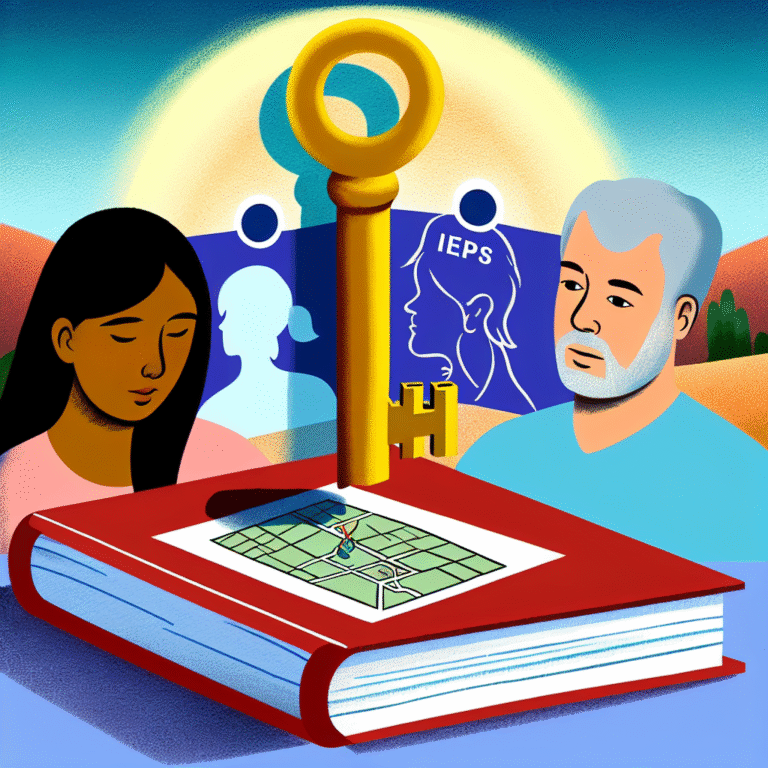
The Neurology of Happiness: How Our Brain Influences Our Joy – The Ultimate Guide to Understanding Your Brain and Cultivating Joy
Introduction
Imagine waking up in the morning with an overwhelming sense of happiness that fills your day from start to finish. It’s a sensation many of us strive for, yet it often feels elusive. The link between our brain and our emotional state, especially happiness, is profound and intricate. In this article, "The Neurology of Happiness: How Our Brain Influences Our Joy," we will explore the science of happiness at a neurological level, uncovering insights into how our brain chemistry, structure, and function dictate our experiences of joy.
Have you ever wondered why certain experiences, people, or activities make you feel ecstatic while others can leave you feeling empty? It’s not just your circumstances; it’s your brain at work, weaving the fabric of your emotional reality. Join us on this enlightening journey as we demystify the neurology of happiness and discover ways to harness this knowledge to enhance our well-being.
The Science of Happiness: A Brief Overview
Before diving into the neurological mechanisms, let’s lay some groundwork regarding happiness itself. Happiness can be defined as a spectrum of emotions ranging from a brief moment of joy to a profound sense of fulfillment. It’s influenced by various factors, including genetics, environment, and, crucially, our neurobiology.
The Role of Neurotransmitters
At the heart of "The Neurology of Happiness: How Our Brain Influences Our Joy" are neurotransmitters—chemical messengers that transmit signals in the brain. Here are some key players:
- Dopamine: Often referred to as the "feel-good” neurotransmitter, dopamine is integral to our reward system. It drives feelings of pleasure and satisfaction.
- Serotonin: This neurotransmitter regulates mood, anxiety, and overall happiness. Low levels of serotonin are often linked to depression.
- Oxytocin: Known as the "love hormone," oxytocin enhances social bonding and feelings of trust and emotional connection.
- Endorphins: These are natural painkillers that promote feelings of euphoria, often released after exercise or laughter.
The Happiness Formula
Recent research has proposed a "happiness formula," suggesting that happiness is influenced by a combination of set point (genetic predisposition), circumstances (external factors), and voluntary activities (personal choices and behaviors). Understanding this formula is essential in grasping "The Neurology of Happiness: How Our Brain Influences Our Joy."
| Component | Description |
|---|---|
| Set Point | Our baseline level of happiness, largely influenced by genetics. |
| Circumstances | External factors such as income, relationships, and life events. |
| Voluntary Activities | Behaviors and choices we make that can increase our happiness levels |
Case Study 1: The Impact of Exercise on Happiness
There’s a wealth of evidence that physical activity can enhance our happiness levels. A fascinating case study observed a group of adults who began an exercise program for eight weeks. The results? Participants reported significant improvements in their mood and overall enjoyment of life.
Analysis
Exercise stimulates the release of endorphins and serotonin, contributing to feelings of well-being. This is a practical application of "The Neurology of Happiness: How Our Brain Influences Our Joy." By understanding how exercise can chemically alter our brain state, we become more equipped to make choices that enhance happiness.
The Brain’s Emotional Centers
To fully grasp "The Neurology of Happiness: How Our Brain Influences Our Joy," we must examine the brain’s structure responsible for processing emotions.
The Limbic System
The limbic system, often referred to as the emotional center of the brain, plays a pivotal role in regulating emotions. It comprises several key structures:
- Amygdala: This small almond-shaped cluster is critical for processing emotions, particularly fear and pleasure.
- Hippocampus: Important for memory formation, the hippocampus also links emotions with memories, making certain experiences more impactful.
- Hypothalamus: This regulates vital functions and is involved in the release of hormones that influence stress and happiness.
Case Study 2: The Role of Mindfulness Meditation
A groundbreaking study published in 2019 found that participants who engaged in mindfulness meditation for just eight weeks experienced increased gray matter density in the hippocampus and decreased activity in the amygdala.
Analysis
This case highlights how mindfulness meditation can transform our brain’s structure and function, directly enhancing our capacity for happiness. By engaging in practices that promote awareness and presence, we can actively influence "The Neurology of Happiness: How Our Brain Influences Our Joy."
The Power of Positive Relationships
One of the most powerful determinants of happiness is our social connections. Relationships can significantly influence our brain chemistry and improve our overall well-being.
The Social Brain
The brain is inherently social. Social interactions activate areas of the brain such as the ventral striatum, which is linked to reward processing, and can stimulate the release of oxytocin.
Case Study 3: Loneliness vs. Social Support
A longitudinal study tracking individuals over ten years found that those with strong social support networks reported higher life satisfaction and lower instances of depression compared to those who were isolated.
Analysis
This study reinforces the idea that fostering positive relationships is crucial for lasting happiness. The interaction of neurotransmitters and emotional responses illustrates how the social aspect of life plays a role in "The Neurology of Happiness: How Our Brain Influences Our Joy."
The Influence of Environment on Happiness
Our environment also dramatically impacts our happiness levels. Factors range from our immediate surroundings to the broader socio-economic conditions we live in.
Nature’s Effect
Research shows that spending time in nature can lead to improved mood and decreased anxiety. The physiological response to nature can lead to lasting changes in happiness levels.
Case Study 4: The Benefits of Nature Walks
In a study conducted by the University of California, participants who spent time walking in a natural environment exhibited a significant reduction in rumination and negative emotions compared to those who walked in urban settings.
Analysis
This highlights the profound link between our environment and our brain’s happiness pathways. Understanding such dynamics contributes to narratives within "The Neurology of Happiness: How Our Brain Influences Our Joy."
Implementing Happiness Strategies
Based on the insights gathered, it’s essential to develop strategies for fostering happiness. Below are actionable steps you can take to improve your well-being:
1. Practice Regular Exercise
Aim for at least 30 minutes of physical activity most days. Whether it’s running, dancing, or yoga, the endorphins released can elevate your mood.
2. Engage in Mindfulness or Meditation
Incorporate mindfulness techniques into your daily routine for a few minutes. This practice can reduce stress and enhance emotional regulation.
3. Foster Social Connections
Make a conscious effort to connect more with family and friends. Social interaction can stimulate the brain’s reward system and enhance happiness.
4. Spend Time in Nature
Regularly engage with nature. This can be as simple as a walk in the park or hiking in the woods—exposure to natural environments fosters well-being.
5. Focus on Variety
Try new activities or hobbies that interest you. Engaging in novel experiences stimulates dopamine, enhancing feelings of joy.
Conclusion
In conclusion, "The Neurology of Happiness: How Our Brain Influences Our Joy" reveals that happiness is not just a fleeting feeling but a complex interplay of brain chemistry, structure, and social factors. By understanding the mechanisms behind our emotions, we can make informed choices that promote lasting joy and well-being. Remember, happiness is a journey, and with the knowledge gained, we have the power to steer our way towards a fulfilling life.
FAQs
1. Can happiness be measured?
Yes, happiness can be quantified through various scales, such as subjective well-being surveys that assess life satisfaction, mood, and emotional experiences.
2. What role does genetics play in happiness?
Genetics can influence our baseline level of happiness. Studies suggest that approximately 50% of our happiness is explained by our genetic makeup, while the rest is shaped by circumstances and activities.
3. How can I improve my dopamine levels?
Engaging in physical activity, achieving personal goals, and consuming a balanced diet rich in proteins can naturally boost dopamine levels.
4. Is it possible to train my brain to be happier?
Absolutely! Practices such as gratitude journaling, mindfulness meditation, and positive affirmations can reshape brain pathways, leading to sustained happiness.
5. Why do some people seem naturally happier?
While genetics plays a significant role, personality traits, life experiences, and environment also contribute to a person’s predisposition toward happiness.
By applying this knowledge to our daily lives, we can build a richer and more joyous existence. The exploration of "The Neurology of Happiness: How Our Brain Influences Our Joy" not only equips us with valuable insights but also empowers us to take action for a happier life.














